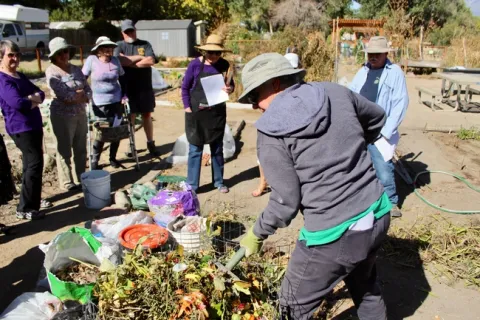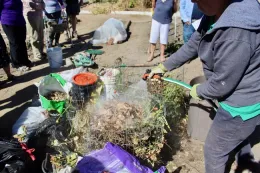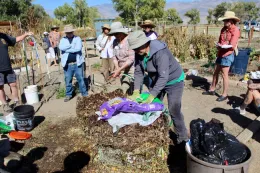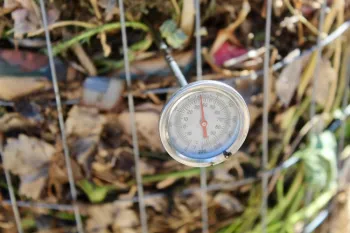
On October 6, Inyo-Mono Master Gardener volunteer Laura Mogg presented the latest Sunday Seminar on composting. She explained the benefits and practical details of composting, and provided a handout from UC Cooperative Extension providing further details.


Laura provided a demonstration of a simple and easy way everyone can compost garden and kitchen waste. Materials are simple: a bit of fence material that is shaped into a cylinder 3 ft wide and 3 ft tall into which layers of leaves, kitchen scraps, coffee grounds, and animal waste from herbivores are added. An even mix of fresh green waste and brown waste is ideal, and any large or woody plants should be cut into small pieces for best results. The pile within the cylinder is thoroughly watered down and topped with a plastic cover to keep it from drying out in our arid climate.

A compost thermometer is required to monitor the temperature of the pile to see when it is ready to turn (between 140°F and 150°F) and to monitor watering and turning until its ready. The finished compost will be about 1/3 the volume of the original contents of the pile.
Bottom line: it didn't look all that hard, and the benefits to our gardens and landfills are too big to ignore.

